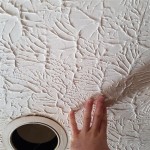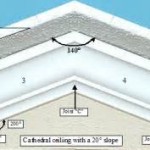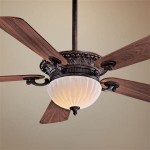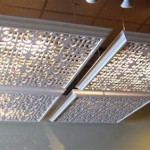Troubleshooting a Malfunctioning LED Flush Mount Ceiling Light
LED flush mount ceiling lights are increasingly popular due to their energy efficiency, long lifespan, and sleek design. They offer a modern aesthetic and provide ample illumination for various spaces. However, like any electrical fixture, these lights can occasionally malfunction. Determining the cause of the problem and implementing the appropriate solution is crucial for restoring functionality and preventing potential electrical hazards. This article outlines common reasons why an LED flush mount ceiling light might fail to operate and provides a systematic approach to troubleshooting.
Before commencing any troubleshooting steps, it is paramount to prioritize safety. Ensuring the power supply to the affected light fixture is completely disconnected is absolutely necessary. This involves switching off the relevant circuit breaker in the electrical panel. Double-checking with a non-contact voltage tester is recommended before touching any wiring or components. This precaution is vital for preventing electric shock and ensuring personal safety throughout the diagnostic and repair process.
Initial Checks: Power Supply and Switch Functionality
The first and often simplest step in troubleshooting a non-functional LED flush mount ceiling light is to verify the integrity of the power supply and the functionality of the associated switch. A faulty switch or a power supply interruption are common culprits that can be easily addressed.
Begin by confirming that the circuit breaker controlling the light fixture has not tripped. Locate the breaker in the electrical panel labeled for the lighting circuit. If the breaker is in the "tripped" position (usually indicated by being in the middle position), reset it by first switching it fully off and then back on. If the breaker trips again immediately, it suggests a more serious electrical problem, such as a short circuit, requiring professional evaluation and repair. Do not repeatedly reset a tripping breaker, as this can pose a fire hazard.
Assuming the breaker operates correctly, the next step is to examine the switch that controls the light. Switches can fail over time due to wear and tear, leading to intermittent or complete loss of contact. A simple test involves replacing the existing switch with a known working switch, if available. If replacing the switch resolves the issue, the original switch was indeed the problem. Alternatively, a multimeter can be used to test the continuity of the switch. When the switch is in the "on" position, the multimeter should indicate continuity (a closed circuit). If the multimeter shows no continuity, the switch is faulty and needs replacement.
Furthermore, it is important to examine the wiring connections at the switch. Loose connections can interrupt the flow of electricity to the light fixture. Carefully inspect the wires connected to the switch terminals, ensuring they are securely fastened and that no wires are visibly broken or frayed. If any loose connections are identified, tighten them securely using a screwdriver, taking care not to over-tighten and damage the terminals.
If the circuit breaker and switch are functioning correctly, the next step is to verify the power supply reaching the light fixture. This can be done with a multimeter. Set the multimeter to measure AC voltage and carefully probe the wires at the light fixture's electrical box. Observe all safety precautions, ensuring the power is off before touching any wires and then turning the breaker back on only when ready to take the voltage reading. The voltage reading should correspond to the standard voltage for the region (typically 120V in North America). If no voltage is present, it indicates a problem with the wiring between the breaker and the light fixture, requiring further investigation and possibly professional assistance.
Examining the LED Driver and Internal Components
LED flush mount ceiling lights typically incorporate an LED driver, which is responsible for converting the incoming AC voltage to the DC voltage required by the LED array. The LED driver is a critical component and a common point of failure. Diagnosing issues with the LED driver requires careful examination and testing.
Visually inspect the LED driver for any signs of damage, such as bulging capacitors, burn marks, or discoloration. These are indicators of a failing or failed component. If any visual damage is evident, the LED driver needs to be replaced. Replacement drivers are often available from the light fixture manufacturer or from electronic component suppliers. It is important to ensure the replacement driver has the same voltage and current specifications as the original.
If there are no visible signs of damage, the LED driver can be tested using a multimeter. However, this requires caution and a basic understanding of electronics. The input and output voltage of the LED driver should be clearly labeled on the device. With the power on (and taking all necessary safety precautions), use the multimeter to measure the input voltage to the driver. It should match the standard voltage of the electrical system. Then, measure the output voltage of the driver. This value should match the voltage specified for the LED array. If the input voltage is present but the output voltage is absent or incorrect, the LED driver is likely faulty and needs replacement.
The LED array itself can also be a source of the problem. While LEDs have a long lifespan, they can still fail, especially if subjected to excessive heat or voltage. Inspect the LED array for any visibly burned out or damaged LEDs. If individual LEDs are visibly damaged, it may be possible to replace them, but this requires specialized soldering skills and equipment. In many cases, it is more practical to replace the entire LED array or the entire light fixture.
Furthermore, check the connections between the LED driver and the LED array. Loose or corroded connections can prevent the flow of electricity. Ensure all connectors are securely fastened and free from corrosion. Clean any corroded connections with a wire brush or contact cleaner.
Addressing Wiring Issues Within the Fixture and Junction Box
Problems within the fixture's internal wiring or within the junction box can also lead to a malfunctioning LED flush mount ceiling light. A thorough inspection of these areas is crucial for identifying potential issues.
Carefully examine the wiring connections within the light fixture itself. Look for loose wires, frayed insulation, or corroded connectors. Ensure all wires are securely connected to their respective terminals. Use wire connectors (e.g., wire nuts) to properly join wires, ensuring they are twisted tightly and the connectors are securely fastened. Replace any damaged or corroded wire connectors.
The junction box, which is the electrical box in the ceiling where the light fixture is connected, is another potential source of problems. With the power off, remove the light fixture from the junction box and inspect the wiring connections within the box. Look for loose wires, damaged insulation, or signs of overheating. Ensure all wires are properly connected and that the ground wire is securely connected to the grounding screw in the junction box. If any wires are damaged or improperly connected, correct the wiring according to local electrical codes.
It is crucial to ensure that the junction box is properly sized for the wiring and connections. Overcrowded junction boxes can lead to overheating and potential hazards. If the junction box is too small, consider replacing it with a larger box that can accommodate all the wiring safely.
Finally, check the condition of the wire insulation. Over time, the insulation can become brittle and crack, exposing the bare wires. This can lead to short circuits and electrical hazards. If the insulation is damaged, replace the affected wires with new wires of the same gauge. It's important to use wires that are appropriate for the voltage and current of the lighting circuit.
By systematically checking the power supply, switch functionality, LED driver, internal components, and wiring, it is possible to diagnose and resolve many issues with LED flush mount ceiling lights. However, if the problem persists or if one is uncomfortable working with electricity, consulting a qualified electrician is highly recommended.

What Is Led Flush Mount Ceiling Lights Enhancing Your Home Lighting W Ledmyplace

Dimmable Led Flush Mount Ceiling Light Fixture With Remote Control 12inch 24w Round Close To Lights 3000k 6500k Color Changeable Slim Modern Lamp For Bedroom Kitchen Com

Commercial Electric 32 In Low Profile Oval Brushed Nickel Color Selectable Led Flush Mount Ceiling Light W Night Feature 56587113 The Home Depot

Lepro 24w 13 Inch Led Flush Mount Ceiling Light Fixture For Kitchen Bathroom Bedroom Porch Hallway Non Dimmable

How To Choose The Right Size Led Flush Mount Ceiling Light Ledmyplace

Aiwen 19 7 In 1 Light White Simple Circle 3 Tone Led Flush Mount Home Hollow Design Ceiling Lighting Pze 951 Wh The Depot

Jordan 17 In Satin Nickel Led Flush Mount Ceiling Light

Noma Led Flush Mount Ceiling Light Fixture White 10 In Canadian Tire

Lepro 24w 13 Inch Led Flush Mount Ceiling Light Fixture For Kitchen Bathroom Bedroom Porch Hallway Non Dimmable

9 In Round Motion Sensor Led Ceiling Light 3000k Warm White
Related Posts








